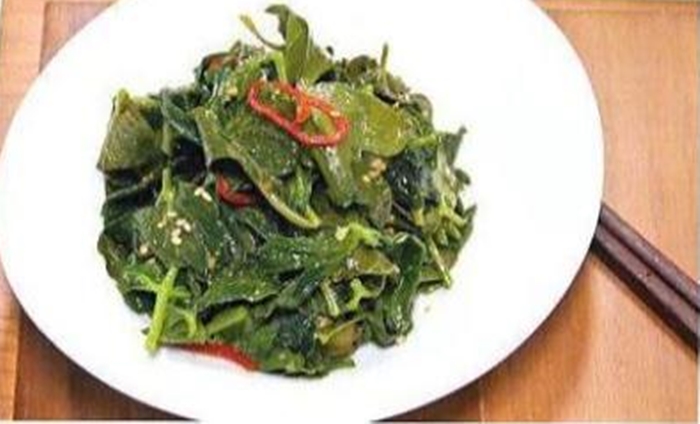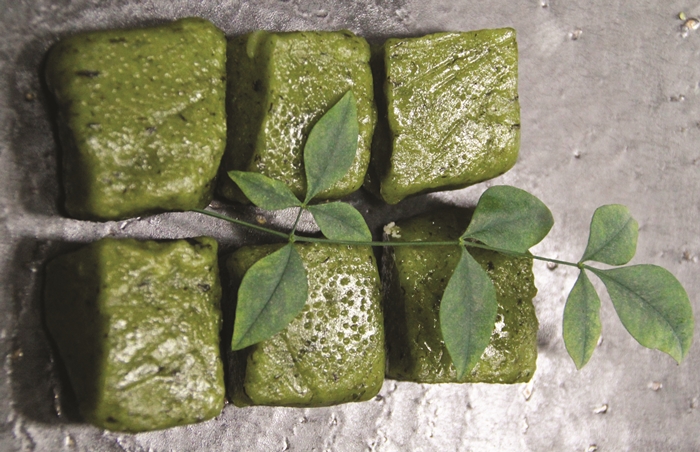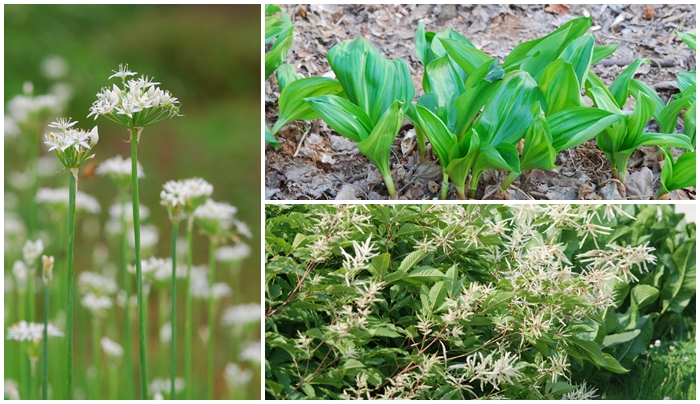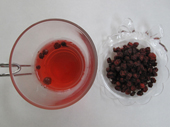- 한국어
- English
- 日本語
- 中文
- العربية
- Español
- Français
- Deutsch
- Pусский
- Tiếng Việt
- Indonesian
As March begins, spring brings the revival of all life. Ever since ancient times, people believed that the arrival of spring, Ipchun, is when frogs wake from their winter hibernation, and this period was the best season to replenish the body with fresh vegetables from new sprouts.
Among the many known spring greens, or bom nameul, the Rural Development Administration recommends three types of greens that are particularly good for retaining good health in the spring. These are a medicinal plant from the family Umbelliferae, (bangpoong namool, Peucedanum japonicum Thunb.), mugwort (sook, Artemisia sp.) and edible parts of the fatsia herb (dureup, Aralia elata (Miq.) Seem.). Together, these compensate for "spring fatigue," a symptom from which people suffer when there is a lack of sunlight and less physical activity due to the winter cold.
A medicinal plant from the family Umbelliferae was originally found in the wild, but is now cultivated on farms. The young shoots, tender leaves and berries are all edible. The shoots and leaves are cooked and seasoned, while the berries can be added to brews of alcohol. These help prevent anemia, alleviate headaches and help people to recover from fatigue.

Stir-fried Umbelliferae
Ingredients: Umbelliferae, crushed garlic, perilla seed oil, sesame seeds, salt, soy sauce
Directions
1. Add one small spoonful of salt to boiling water and blanch the Umbelliferae leaves.
2. Mix the crushed garlic, soy sauce, sesame seed, salt and perilla seed oil to taste and add it to the blanched greens in a pan to stir-fry.
Mugwort is mentioned in the founding myth of ancient Korea. A bear ate it with garlic, enduring 100 days in a cave to become human. It is a familiar ingredient found on the tables of many households.
In the “Dongeuibogam” (1613), a historical tome on herbal medicine, mugwort is described as having a, “bitter and spicy taste with warm traits making it effective to clear out the bad characteristics of the body’s organs, while still being a remedy for pain associated with excessive humidity, and it helps strengthen organ functions.”
The new shoots that bloom in the spring can be added along with shepherd's purse (naengyi), another spring green, to the common fermented soy bean paste (doenjang) soup, enriching it with a one-of-a-kind taste and smell. Also, filled with bright green colors mugwort rice cakes can be a fragrant spring treat.

Mugwort rice cake
Ingredients: 600 grams of glutinous rice, 200 grams of mugwort, 1/2 cup of kidney beans
Directions
1. Wash the rice and leave it in water to soak for more than 5 hours. Drain and grind into a powder.
2. Add four spoonfuls of water to the rice powder made in step 1.
3. Line a preheated steamer tray with cheesecloth. Level out the powered rice. Let it steam for 15-20 minutes.
4. Wash the mugwort and blanch it in boiling water with two teaspoons of salt. Drain out the water. Chop it finely.
5. When step 3. is complete, add the chopped mugwort and knead it into the powder until it is completely mixed.
6. Parboil the kidney beans, soak them in saltwater, drain and mix it into step 5. Shape and slice the rice cake dough into bite-sized pieces.
Shoots of the fatsia plant have protein, vitamin C and calcium, and help with calming the nerves and aiding blood circulation. It also has saponin, similar to what is found in ginseng, which adds vitality and helps to recover from fatigue.
Blanch the new shoots and soak them water to get rid of any bitterness or sourness. Dip or douse them in sweet & sour red pepper paste to enjoy the natural flavor and fragrance.

Chives (buchu), lily leeks (myeongyi nameul), goatsbeard (sam nameul) and cheeseweed (gomchwi) are also local spring greens that help get rid of 'spring fatigue' and wake the tastebuds. They can all be commonly found on the Korean table.
By Paik Hyun
Korea.net Staff Writer
Photos courtesy of the Rural Development Administration
cathy@korea.kr

